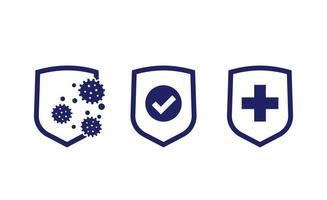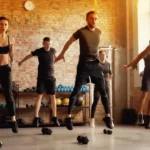Regular physical activity plays a critical role in maintaining and enhancing immune function. The immune system is a complex network of cells, tissues, and organs that defend the body against pathogens. Exercise affects both innate (first-line defense) and adaptive (specific, learned defense) immunity, helping to reduce the risk of infections and chronic diseases.
- The immune system defends the body against infections and diseases.
- Physical activity is a modifiable lifestyle factor that enhances immune function.
- Exercise influences both innate and adaptive immunity, reducing disease susceptibility and improving quality of life.

Physiological Impact of Exercise on the Immune System
Acute Effects
- Increased immune cell circulation during and after exercise.
- Mobilization of:
- Natural Killer (NK) cells
- Neutrophils
- Macrophages
- Lymphocytes (T-cells and B-cells)
Chronic (Long-Term) Adaptations
- Reduced systemic inflammation (↓ CRP, IL-6, TNF-α)
- Enhanced immune surveillance and pathogen clearance
- Improved tissue repair mechanisms
- Better metabolic health (↓ insulin resistance, ↑ mitochondrial function)
Biological Mechanisms Behind Immune Enhancement
1. Increased Immune Surveillance
- Exercise increases the circulation of immune cells (like natural killer cells, neutrophils, and lymphocytes) throughout the body.
- These cells move more quickly and in higher quantities during moderate-intensity exercise, enhancing early detection of pathogens.
2. Reduction in Chronic Inflammation
- Chronic low-grade inflammation contributes to disease and immune dysfunction.
- Regular exercise reduces inflammatory cytokines (like TNF-α and IL-6) and increases anti-inflammatory cytokines (like IL-10).
3. Improved Stress Response
- Cortisol (stress hormone) suppresses immune function when chronically elevated.
- Exercise helps regulate cortisol and boosts endorphins and serotonin, improving mental health and immune resilience.
4. Enhanced Vaccination Response
- Studies show people who exercise regularly have stronger responses to vaccines, producing more antibodies.

Types of Exercise and Their Immune Effects
1. Aerobic (Cardiovascular) Exercise
- Examples: Brisk walking, jogging, swimming, cycling
- Benefits:
- Enhances circulation of immune cells
- Improves lung and heart function
- Decreases risk of respiratory infections
- Recommendations:
- Frequency: 3–5 days/week
- Duration: 30–60 minutes/session
- Intensity: Moderate (50–70% max heart rate)
2. Resistance (Strength) Training
- Examples: Free weights, machines, bodyweight exercises
- Benefits:
- Maintains lean muscle mass and bone density
- Modulates immune cell production
- Improves insulin sensitivity
- Recommendations:
- Frequency: 2–3 days/week
- Sets/Reps: 2–4 sets of 8–12 reps per muscle group
3. Mind-Body and Flexibility Training
- Examples: Yoga, Tai Chi, Qigong, Pilates
- Benefits:
- Reduces cortisol and sympathetic nervous system activity
- Enhances sleep quality
- Promotes parasympathetic recovery
- Recommendations:
- Frequency: Daily or as needed
- Duration: 20–45 minutes/session
🍎 Complementary Factors for Immune Support
- Hydration: Keeps mucous membranes moist and supports cellular function.
- Nutrition: Ensure adequate intake of vitamins (C, D, E), zinc, and antioxidants.
- Sleep: 7–9 hours per night is crucial for immune regeneration.
- Stress Management: Chronic stress can negate the positive effects of exercise.
Key Takeaways
- Regular moderate-intensity exercise strengthens immune defense.
- Both aerobic and resistance training contribute to immune health.
- Mind-body exercises help reduce stress and improve hormonal balance.
- Overtraining can be harmful—balance with recovery and nutrition.
To understand much better here is a sample
Sample Weekly Immune-Supportive Exercise Plan
| Day | Activity | Type | Duration | Intensity |
|---|---|---|---|---|
| Monday | Brisk walk + stretching | Aerobic + Flexibility | 45 min | Moderate |
| Tuesday | Resistance training (upper) | Strength | 40 min | Moderate |
| Wednesday | Yoga or Tai Chi | Mind-body | 30 min | Low |
| Thursday | Jogging or cycling | Aerobic | 45 min | Moderate |
| Friday | Resistance training (lower) | Strength | 40 min | Moderate |
| Saturday | Hiking or swimming | Aerobic/Varied | 60 min | Moderate |
| Sunday | Rest + light walking | Recovery | 20–30 min | Low |
Breathing exercises: how to perform and its benefits – Nutriphyfit

